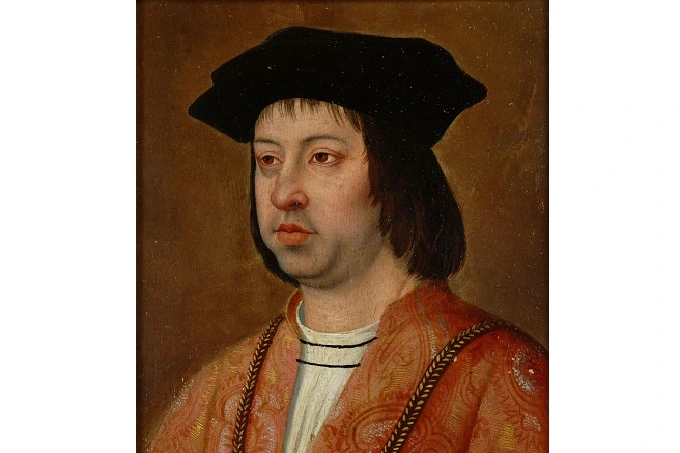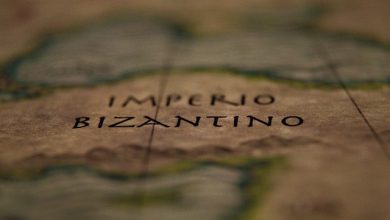How war and intrigue caused the marriage that created Spain

One of the most brilliant “creations of political theatre” is the marriage of Isabella I of Castile and Ferdinand II of Aragon, who both ruled their respective countries at the time. It was nothing like the romantic tales one would expect to find in books. Their union was the product of hundreds of years of Spanish history, shaped by war and political intrigues into a dynastic alliance that established the foundations of the modern Spanish state and kicked off the process of unifying the country.
Foreword
Shortly before Ferdinand and Isabella were born, the foundation had been laid for their future marriage to one another. The elites of Aragon were sick and tired of serving as vassals for Catalan business interests. And when they finally had the opportunity, which was in 1410, they did not waste any time seizing it. After the death of Martin the Humane, who did not have any heirs, the House of Barcelona ended, and the Aragonese rulers were able to place on the throne of Aragon the Prince of Castile, Ferdinand of Antequera.
The Castilian expansionists supported him. Martin the Humane’s death also ended the House of Barcelona. This event changed the course of history for the two states for all time, as it forced them to work together to find a solution to a global problem of ongoing conflict. The formation of a complete dynastic union through fiction ended up being the best solution. But as we all know, even the best-laid plans have their weaknesses.
Isabella I of Castile

Isabella was born when women all over the world were striving for any scrap of political authority they could get their hands on. However, her father, John II of Castile, saw Isabella as a way of increasing Castilian territory in pursuit of the unachievable aim of uniting Spain from an early age. At age six, she entered into her first engagement with an Aragonese prince, who would later become her husband Ferdinand; however, this ceremony was interrupted by unanticipated events. This arrangement had to be scrapped since Isabella had made a promise to the king of Portugal, and the civil war in Castile forced Isabella to engage with a Castilian court member.
However, her uncle, King Henry IV of Castile, who had chosen Isabella, seventeen years old at the time, to be his heir, made a promise that he would never force his niece into marriage without first receiving her approval for any marriage arrangements. After Isabella’s shackles were removed and she was given the ability to determine her destiny, the young woman decided to revisit the prospect of entering into a marriage alliance with Ferdinand of Aragon.
Ferdinand II of Aragon

Ferdinand, for his part, was likewise brought up in a court riddled with contention. His early life was marked by peasant uprisings against his feudal suzerains and the dynastic dispute between his father and his older brother. Both of these events occurred during his childhood.
The nobles were hostile to Ferdinand’s unpopular father and supported Ferdinand’s brother during the Catalan Civil War when he rebelled against his father. This occurred during the conflict between Catalonia and Spain. However, Ferdinand did not change his loyalty to him, which ultimately worked to his advantage.
First, it allowed him to gain excellent military experience at such a young age (before he turned eighteen) as one of his father’s lieutenants. This enabled him to become an accomplished leader described as a kind, charming, and attractive young man with tremendous intelligence. The second reason he is the only rightful heir to the kingdom of Aragon is that his brother died under strange circumstances while in his father’s custody.
A clever move
Only a few days before their wedding, in the middle of October 1469, Ferdinand and Isabella met for the first time. It was against the wishes of King Henry IV of Castile, who now saw Isabella as an inconvenient and stubborn threat to his plans, that the two heirs saw one another. Isabella escaped the court under the guise that she would visit the family graves. However, Henry had agreed to provide her with the freedom to marry whomever she wished, despite Isabella’s fears that she would be eliminated. In the meantime, Ferdinand undertook his journey through Castile while posing as a servant. In October 1469, Ferdinand and Isabella tied the knot in a wedding that close family and friends only attended.
There was one really sensitive matter that needed to be settled. Due to the complex intrigues of Spanish dynastic politics, Ferdinand and Isabella were third cousins. They had the same great-grandfather, King John I of Castile, which made their relationship possible. Because of this, they were considered to be of blood relationship, which prevented the Catholic Church from giving its blessing to their marriage because they were supposed to be too closely related. The Catholic Church was responsible for firmly establishing such taboos in its propaganda and daily practices. But despite all the obstacles, the pope’s authorization was eventually obtained.
According to one account, Pope Pius II, who had passed away five years previously in 1464, was the one to put his signature on it. Consequently, John II of Aragon and the powerful churchman Rodrigo de Borja (also known as Borgia, who would later become Pope Alexander VI) forged the document to their significant benefit.
Political considerations
The marriage of Ferdinand and Isabella was not only the direct cause of the ongoing civil war in Catalonia but also laid the groundwork for the eventual unification of the two crowns that their respective families held. The marriage between Ferdinand and Isabella resulted in the signing of a treaty that established Castile’s formal supremacy over Aragon. This treaty was part of the marriage. In payment for her assistance during the Civil War, Isabella became queen over all of Castile and Aragon, and Ferdinand became her consort. Isabella would rule the two kingdoms simultaneously.
A portion of the paper was read aloud at the ceremony, drawing attention to the fact that it was a highly political arrangement. In addition, it was not an agreement between Castile and Aragon in the traditional sense. Although Ferdinand’s grandfather John II of Aragon, was behind the agreement in a covert capacity, Isabella’s uncle Enrique IV of Castile was not included in any way. This demonstrates once more that Isabella wanted to establish her independent political authority, which was, in many respects, in opposition to her uncle and his successors’ power. After finding out that Isabella’s activities had led to her uncle being sucked into a civil war, Isabella’s uncle King Henry felt outraged. He decided to disinherit Isabella in favour of his daughter, la Beltraneja. Unfortunately, Joanna was the target of much ridicule due to her association with an unpopular king, and it was rumoured.
Power struggle
After Enrique died in 1474, Juana was named his successor; but, as Isabella demonstrated throughout her life and career, shrewd politics and the precise use of power always triumphed over ancient law. Juana was crowned queen of Castile and León in 1476. She hurried to Segovia, where she assembled a court of nobility and, to a considerable extent, through force of will, proclaimed herself queen of Castile and Ferdinand to be her rightful husband. Isabella was passionate about following in the footsteps of other famous women who lived during the Renaissance in Europe.
Despite suffering a defeat, Juana’s allies started reorganizing and plotting a rebellion in conjunction with the Portuguese invasion. This conflict would later be known as the War for the Castilian Succession. In his hurry to reach Segovia, Ferdinand was greeted as king upon arriving in the city. However, this did not mean that Ferdinand and Isabella could ignore all other factors and govern together as Catholic monarchs: each stood at the head of an exceedingly complicated sequence of commitments and political interests that frequently conflicted with one other.
After Isabella was crowned queen, she and Ferdinand agreed to sign the Concordat of Segovia. This document named Ferdinand co-king of Castile with Isabella, but it gave Isabella’s heirs the exclusive right to inherit Castile and gave Isabella a kind of royal veto. After Isabella acceded to the throne, they signed the Concordat of Segovia. Consequently, there followed several months during which the two sides argued with each other politically and legally.
Just a few short months after Isabella ascended to the throne, supporters of Juana la Beltraneja staged a rebellion against her, and King Afonso of Portugal viewed this as an opportunity to seize control of Castile. Despite the ensuing scandal, Afonso married Joanna, his niece, and joined the rebellion by leading an invasion of the west. It shouldn’t come as a surprise that outside interference in the fights for Spanish succession was not unusual in the annals of history.
Ironically, Ferdinand and Isabella were responsible for starting the struggle that came to be known as the war for the Succession of Castile. Even though the Castilian and Aragonese army of the Isabellists against the Juanistas made little ground, Ferdinand and Isabella portrayed the stalemate as a surprising success. This was because the Juanistas of Afonso and Juana were militarily weak. They were able to depict themselves as a dynamic new force in Spanish politics by launching a publicity effort that was a huge success over the entirety of Spain. In addition, the conflict helped bring the kingdoms of Castile and Aragon closer together. In 1475, Isabella formally transferred all of her royal power to her husband as co-ruler after the two kingdoms became closer due to the war.
At the same time, its military prowess of Ferdinand prevented the French from developing a foothold in Navarre. As a result, by the end of 1476, the alliance of la Beltraneja had fallen apart, and Isabella was securely established on the throne. Isabella displayed a remarkable amount of political savvy using the carrot and stick approach. She made reasons available to the aristocrats who rejected Joanna and severely cracked down on those who continued to oppose her. In February of 1479, Ferdinand’s father, John II of Aragon, passed away. Shortly after that, Ferdinand was coronated as king of Aragon, ushering in a transition of power that was significantly more peaceful.
Conclusion
Afonso was unable to catch the attention of King Louis XI of France in prolonging the war, and in the year 1479, he was dealt a blow by the pope, who revoked the permission he had given for him to marry his niece. This was a major setback for Afonso. In September that year, Afonso announced his withdrawal and signed the Treaty of Alcáçovas, in which he and the Catholic monarchs renounced all of their claims to each other’s kingdoms. This was because Afonso lacked legitimacy, French allies, and Castilian dissenters. In addition, Afonso’s withdrawal was met with opposition from within Castile. The marriage of Ferdinand and Isabella’s daughter to Afonso’s son served as the formalization of the pact, which also included the establishment of expansive zones of influence for future expansion (along with a substantial dowry of one hundred and six thousand gold doubloons). After being exiled to a convent, La Beltraneja never again participated in the political life of Castile.
In 1480, Ferdinand and Isabella established themselves as co-rulers of united Spain. Through his father, Ferdinand inherited the thrones of Aragon and Sicily, as well as the title of Count of Barcelona. Isabella was crowned queen of Castile and Leon by the right of conquest she had obtained from the Beltraneja and the Portuguese. The Concord of Segovia, later expanded by Isabella’s military operations, bestowed upon Ferdinand a joint regency over all of Isabella’s kingdoms; in 1481, Ferdinand presented upon Isabella all of the same rights. The coats of arms of the Catholic monarchs were combined with the coats of arms of Castile, Leon, and Aragon to form a single, unified coat of arms for the country. As a result, their rule signalled the end of the several kingdoms in Spain at the time and the beginning of the Kingdom of Spain.




